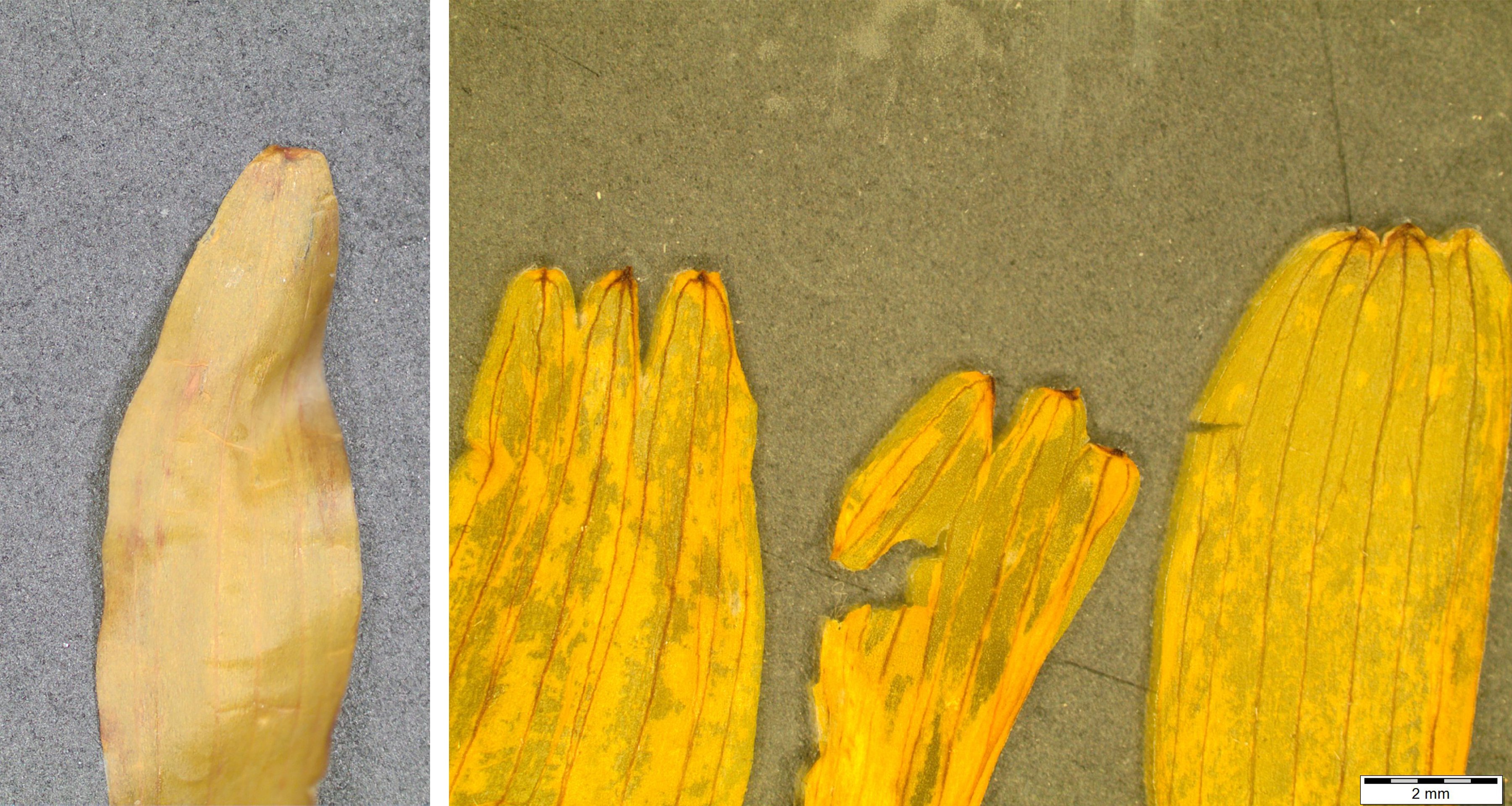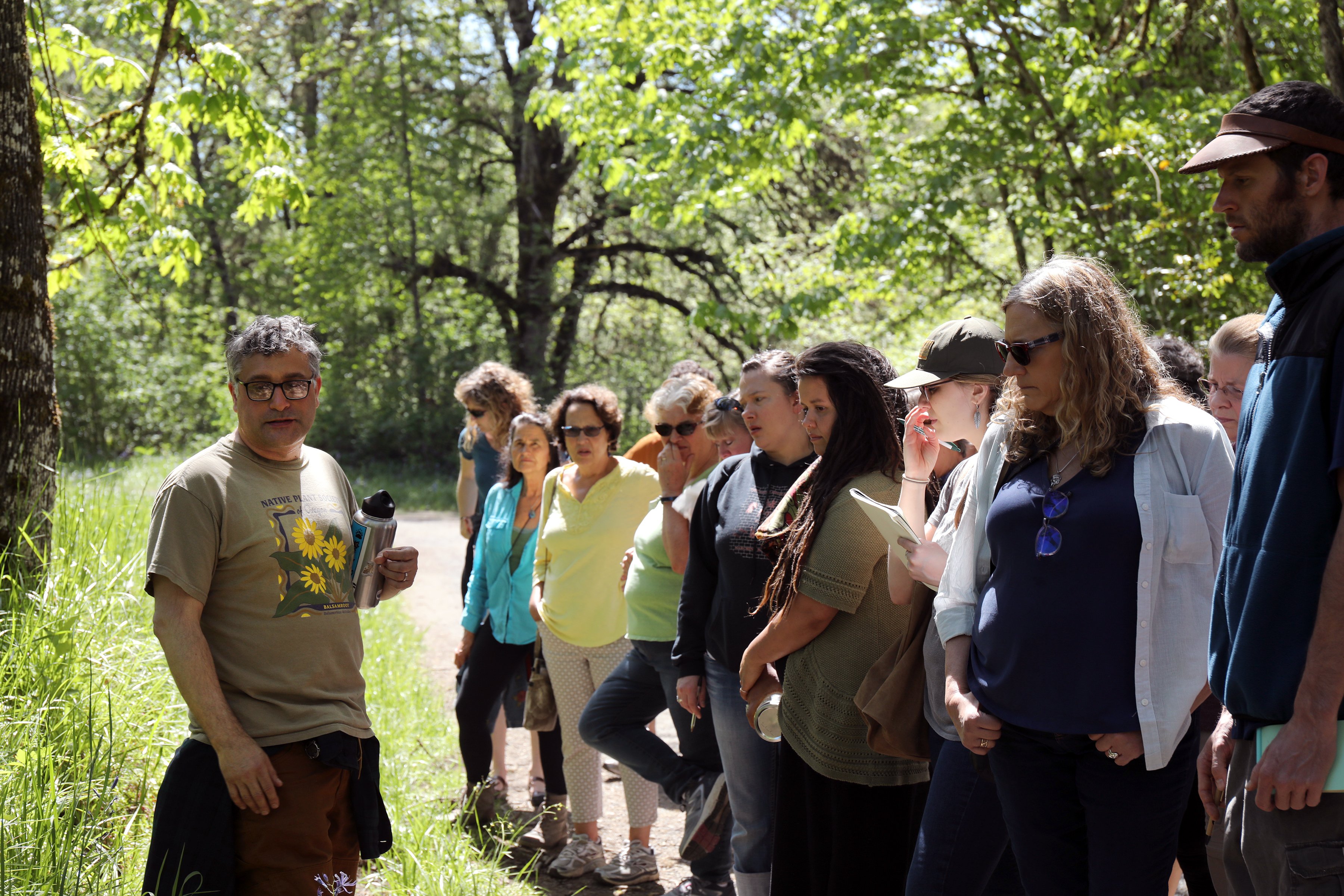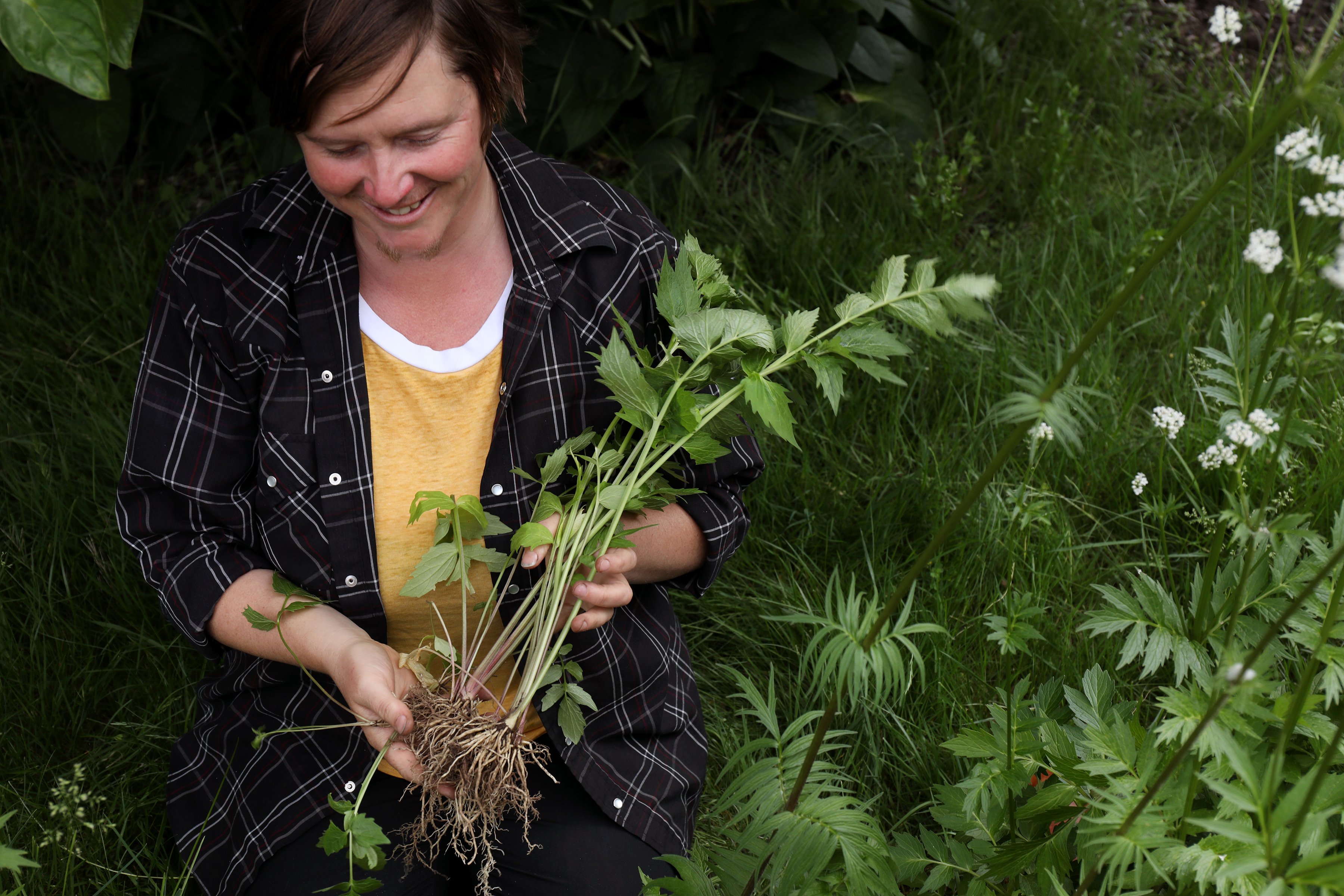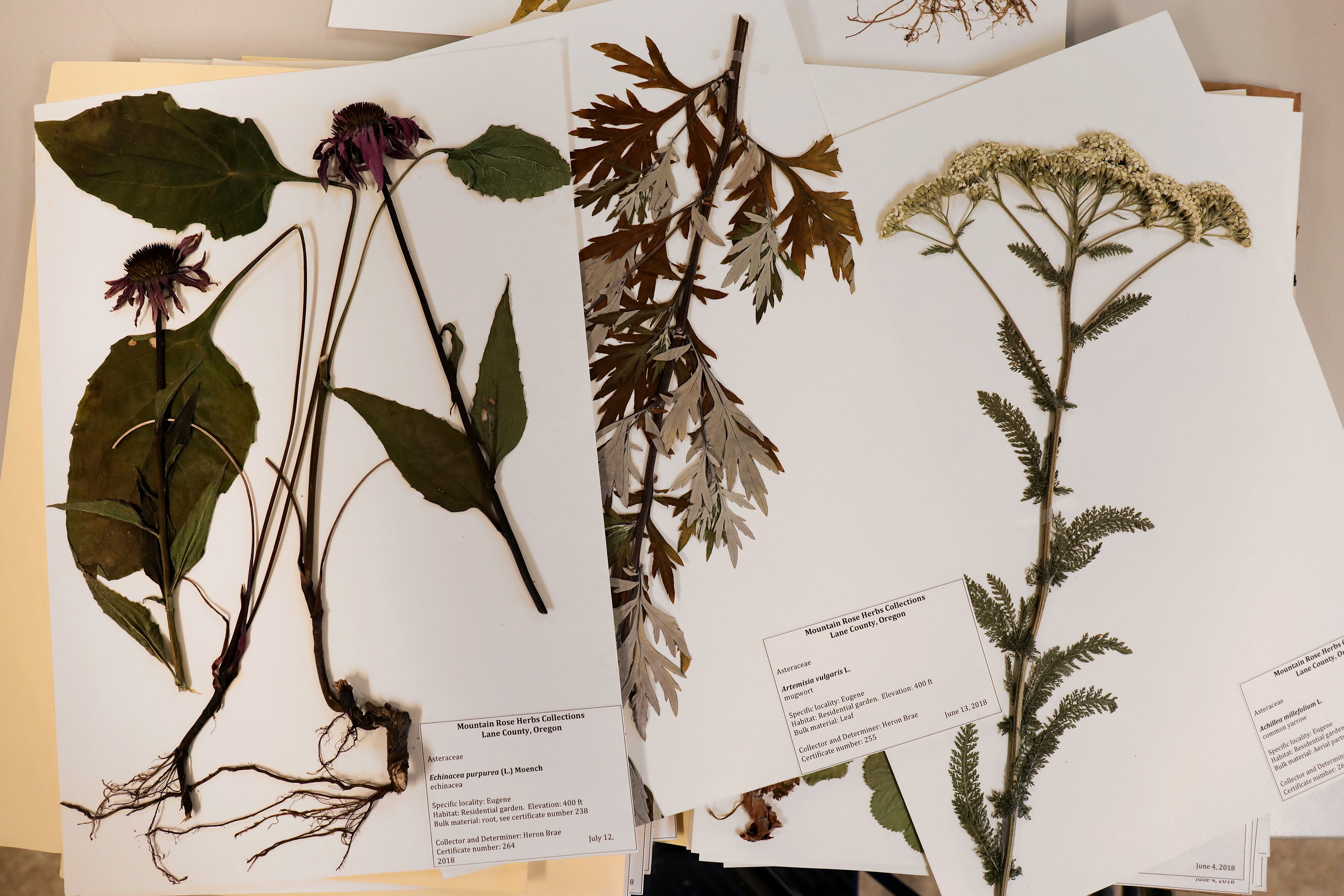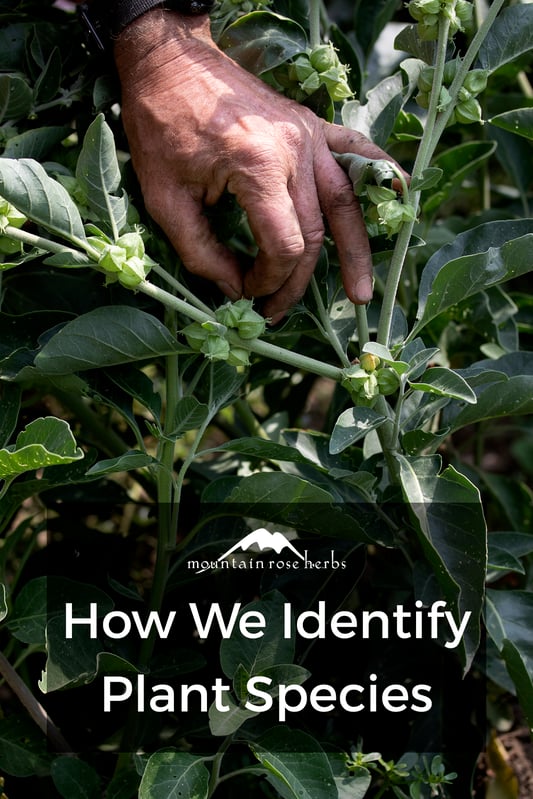The question at hand is, “is this actually Arnica montana?” Steven, our Director of Quality, stands in front of two computer screens. One monitor displays brightly colored bars stacked on a black backdrop. On the other, photographs of vibrant yellow petals are zoomed in to such a degree that the golden bits on screen look more like banana peels than flowers. Steven and his team of lab-coat-wearing professionals use various methods of testing and an extensive reference library of pressed plant parts to find the answer. Species identification not only ensures efficacy, it also means keeping our customers safe.
Steven has been on the Mountain Rose Herbs staff since 2007, and currently oversees the Quality Control Lab. In this role, Steven has built our identification program, which now serves as a model for others in the herbal industry. It’s not just Steven’s tenure here that has prepared him for this important role. He’s also a trained botanist, co-owner of the Columbines School of Botanical Studies, a botanical adviser for the American Herbal Pharmacopoeia (AHP), and a board member for the nonprofits United Plant Savers and American Herbal Products Association (AHPA), to name a few. It’s clear that Steven knows his plants.
“Our identity program is my favorite aspect of this job,” Steven says. “We used to have to rely on our growers and their analysis of the material. Now our program is more sophisticated, and we have the ability to test everything to ensure it’s exactly what we want.”
The process begins when samples of leaves, flowers, stems, roots, and berries are shipped to our Eugene, Oregon headquarters from all corners of the world. In many cases, we’ll begin with organoleptic testing, a method that harnesses the power of basic human senses. Identifying a species can sometimes be as easy as noting its color, size, taste, and aroma.
However, some plant material (which often arrives in powdered, cut, and broken pieces), can be difficult to discern. That’s where macroscopic, microscopic, and state-of-the-art High Performance Thin-Layer Chromatography (HPTLC) comes in. Our stereoscopes provide magnification up to 45 times, illuminating each species at the cellular level. HPTLC testing further breaks down botanicals into their individual constituents, providing our lab technicians with a visual “fingerprint.”
Our extensive and ever-growing library of dried plant reference material, filled with specimens from AHPA and professional botanists, gives our team a control sample as a point of comparison.
Another professional botanist, Heron, is an integral part of our identity program. Her deep experience in collecting and authenticating wild plants has contributed pounds of pristine plant material to our identification library.
“I’m skilled at identifying plants,” Heron says. “Misidentifying botanicals is not only embarrassing, it can hurt people. So, having a stringent identity program is not only important, it’s ethical.”
Reference samples provided by Heron and others help us ensure that every lot of flowers we sell is as intended—in this case, Arnica montana. Its blooms are regularly confused with Heterotheca inuloides, which is commonly called “Mexican arnica.” To the naked eye and at the cellular level, these two different plants can look unbelievably similar. But when viewing macroscopic images of the petals, the differences are obvious. For example, the Arnica montana florets have three points (otherwise known as “teeth”) and multiple, visible veins. Macroscopic images of the Heterotheca inuloides display a single “tooth” and only one vein. While this false arnica has similar uses to true arnica, it’s important to us to offer only the highest quality herbs that are precisely what we say they are.
“The dissecting microscope allows us to see these images,” Steven says. “It’s nice to have the four different identity testing methods so we can use one or a combination to help us differentiate a species.”
The recent lot of arnica that arrived from our farm partners passes the test and will make its way to our warehouse for storage, before being hand-packed to order for our customers.
Want to Learn More About Plant Identification?
Read About Taxonomy and Species Labeling at Mountain Rose Herbs!
You May Also Like:
- Learn About Our Workplace Green Team
- Harvesting Organic Chaga Mushrooms in Backwoods Canada
- Pioneering Organic Rhodiola Cultivation in Alaska

